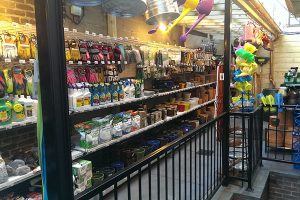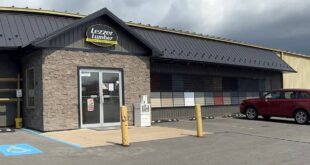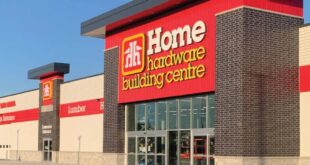Neal Aissa
Tarzian Hardware
Brooklyn, New York
Numbers to Watch: Sales Per Square Foot, Gross Margin Per Square Foot, Inventory Per Square Foot
The Challenge
Operating a 3,500-square-foot hardware store within walking distance of two big-box retailers means Neal Aissa, operations manager at Tarzian Hardware, in Brooklyn, New York, needs every square inch of his salesfloor to work hard. There’s no room for dead space or unproductive categories. Aissa, along with store owner John Ciferni and floor managers at the store, has been on a mission to run a highly efficient store since he joined the business seven years ago. Their limited floor space comes with a set of unique challenges.
For example, they don’t have room for complete vendor planograms, so they have to do extra work to identify those items that will move the fastest. Every product must work hard to earn its keep. Items that don’t sell are quickly eliminated to make room for those that do. Aissa and his team also eliminated warehouse space, preferring to rely heavily on a just-in-time ordering policy, so ordering must be sharp. With discount home improvement retailers within easy reach for his customers, they have to find ways to differentiate Tarzian Hardware. With little room for impulse merchandising in the store, employees must learn to sell the entire project and increase transaction size.
For most retailers, these challenges of running a retail operation are familiar. But since Aissa doesn’t have the luxury of a larger salesfloor, the room for error is narrow. He maintains an almost hyper vigilance when it comes to monitoring the productivity of his salesfloor, paying acute attention to numbers on his financial statement such as transaction size, inventory turns and gross margins. His solution to selling out of 3,500 square feet has something to teach retailers of any size operation.
The Solution
Margins and turns—that’s the criteria for how Aissa compiles his product mix. He says Tarzian Hardware doesn’t try to be a traditional hardware store across all of his categories. They don’t have the space, so they focus heavily on consumer items, such as housewares, cleaning, paint and lawn and garden. To keep those categories performing well, they take a systematic approach to reviewing product categories.
“We’re constantly looking for those ‘dogs’ (slow moving items) we need to eliminate,” he says. If something has a low inventory turn, he replaces it with something else.
“It’s important to get over the perception that there are certain items we just have to have. The only thing that matters is if it sells in our market.” The store only stocks the fast movers, and for those unusual items, customers may request a special order. With frequent deliveries from the store’s supplier, Aissa receives those items quickly.
To make sure he stays current on products and that he’s stocking only the best sellers, Aissa and his team conduct regular line reviews. “We have a scheduled rotation for reviewing every department in the store,” Aissa says. It takes about two years to go through the entire store, but it ensures that no department will get neglected. It also means that instead of just taking the standard vendor planogram and sliding it into his store, he reviews each item in the planogram separately and creates his own assortments based on demand in his market.
With limited space, Aissa also must resist the temptation to purchase high-ticket items that have small margins in return. “High-ticket items can be high risk, because they take up valuable inventory space but don’t offer much in return,” he says. “We’re all about trying to be as efficient as we can be.”
Pointers for Success
Trust Your POS System
Having a POS system is standard for most retail operations these days, but you need to be sure you are using it to its full capacity. Don’t just use it as a cash register—take advantage of all of its features that can help you run a more efficient operation. If you’re not sure exactly how it can help, talk to your POS provider and ask for a training session. A few hours of your time learning some of its features will pay off in the future as you understand how to tap into the goldmine of information the POS has to offer.
“You pay a lot of money for that system, and if you’re not actually using it, that’s a waste,” says Aissa. “It’s important to get others on your staff to use it as well and to use all the features it offers.”
Be Smart on Market Buys
You may love a bargain, but when you attend your wholesaler buying markets, be careful not to over spend, says Aissa. Just because something is on sale doesn’t mean you should buy it if you can’t turn that product quickly. “Even if we had a large backroom to store inventory, we’d still be super selective in purchasing large quantities,” he says. “We don’t want to tie up cash just to have inventory sit in the warehouse.”
While there are times when purchasing large quantities may make sense for some, it’s important to not get caught up in the mentality of buying just for the sake of the bargain. A careful approach to buying will free up cash flow and let you focus on buying items with high turns.
Get Employees to Sell More Impulse
Aissa doesn’t have space for much impulse merchandising at Tarzian Hardware. Instead, he relies on the selling skills of his employees to suggest add-on sales and sell the entire project. With two big boxes within an easy walk of his store, if Aissa doesn’t sell the entire project the first time, customers may go elsewhere to get those items they forgot.
If you want to train employee to sell projects, encourage them to try projects at home so they know firsthand what products they need. Another tool, available to North American Retail Hardware Association (NRHA) members, is the Project Pro training series of online courses. These walk employees through common DIY projects and explain all the tools and materials needed to complete a project, as well as the financial benefits of a project sale.
 Hardware Retailing The Industry's Source for Insights and Information
Hardware Retailing The Industry's Source for Insights and Information








